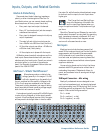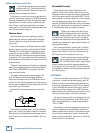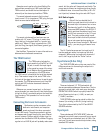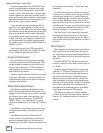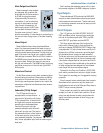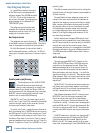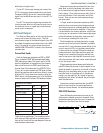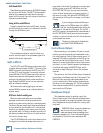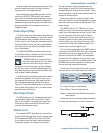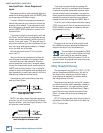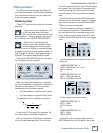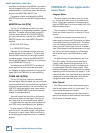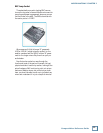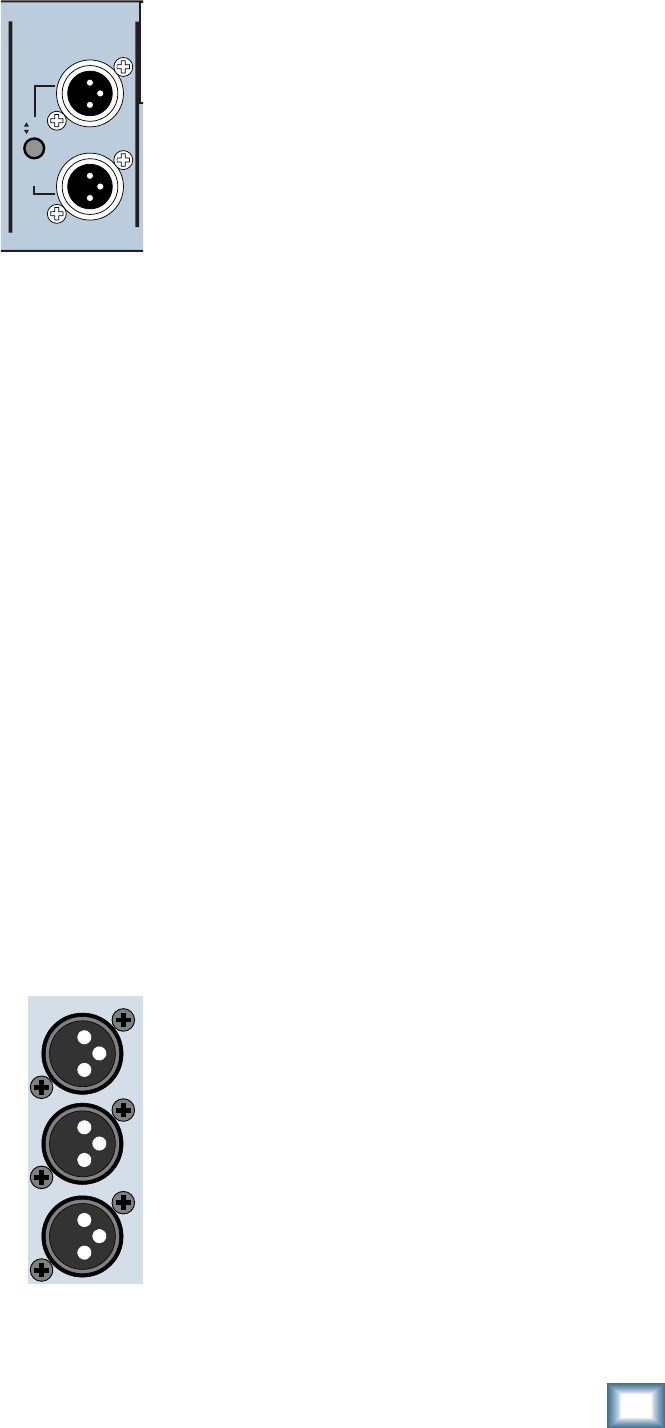
21
Compact Mixer Reference Guide
MIXER ANATOMY: CHAPTER 2
Main Output Level Switch
Several compact mixer models
are equipped with a switch that
attenuates the XLR main outputs
by 30 dB, bringing them down
to approximately the level of a
microphone. If you’re submixing
a group of instruments on stage
(say a bunch of keyboards), by
switching the output to MIC level,
you can send this submix back to
the main mixer just as if it were
another microphone. It’s also handy for connecting to
the one mic input they give you in the hotel meeting
room.
Mono Output
Several Mackie mixers have a dedicated Mono
output for those requirements that seem to pop up
now and then, demanding a monaural mix of a pains-
takingly-created stereo panorama. The last thing you
want to do is start twirling all your carefully-placed
PAN settings to one side. What to do? Stick a cable in
the MONO output, hand the other end to Mr. Mono,
and you’re done. He’s got his mono mix and you’ve
still got your stereo mix. The MONO output is nothing
more than an equal mix of the left and right MAIN
MIX outputs.
Mono Level Control
So, Mr. Mono comes running back, screaming about
the level being so loud that his camcorder is melting.
Just reach for this knob and turn it down a bit. Just
the thing for sending mono signals to mic inputs like
camcorders, telephone interface boxes, even answer-
ing machines.
Subwoofer (75 Hz) Output
The CFX series of mixers is
equipped with a unique feature – a
mono output followed by a 3rd order
75 Hz low-pass fi lter. It sums the left
and right main outputs and removes
everything but the deepest bass.
Connect this output to a high-
powered subwoofer, and the music
police will be right over. The level of
the subwoofer output is fi xed relative
to the main outputs, so be sure that
your subwoofer amplifi er (or powered
sub) has an adjustable input level for balancing the
bass level.
Don’t confuse this subwoofer output with its simi-
larly named neighbors, the SUB (subgroup) outputs.
Tape Outputs
These unbalanced RCA jacks tap the MAIN MIX
outputs to make simultaneous recording and sound
reinforcement more convenient. They’re also handy
for interfacing consumer recorders or semi-pro com-
puter sound cards.
Direct Outputs
The 1/4" jacks on the 1604-VLZ PRO, 1642-VLZ
PRO, and 8-Bus, deliver the signal from nearly the
tail end of the channel path: post-TRIM, post-EQ,
post-LOW CUT, post-fader, and post-MUTE.
The Onyx mixers also have direct outputs, but
they’re a bit different, both in form and function,
and they’re labeled RECORDING OUTS. Rather than
using separate 1/4" jacks, these mixers use 25-pin D
Subminiature (D-Sub) connectors, providing eight
fully balanced direct outputs on each connector.
The direct outputs on the Onyx series are more truly
“direct,” coming straight from the mic preamp stage
(which also incorporates the instrument and line in-
puts). These outputs are unaffected by the equalizer
or fader settings and are designed for the cleanest
recording of the direct microphone signal.
Optional for the Onyx is a FireWire
®
(IEEE-1394)
card, which provides direct outputs in digital format.
This is great for recording your live gigs with a laptop
computer.
Not all compact mixer models have direct outputs.
Some have direct outputs on only the lower-num-
bered channels, and only the 8-Bus and Onyx have a
DIRECT output on every channel.
Direct outputs are useful for sending the channel
straight to a track of a multitrack recorder. A direct
output can also be used to send a single channel’s
signal to an effects processor without using up an
Auxiliary send.
L
R
MAIN OUTS
MIC
+4
MAIN
OUTPUT
LEVEL
MAIN OUT
L
R
S
75Hz
SUB OUT



